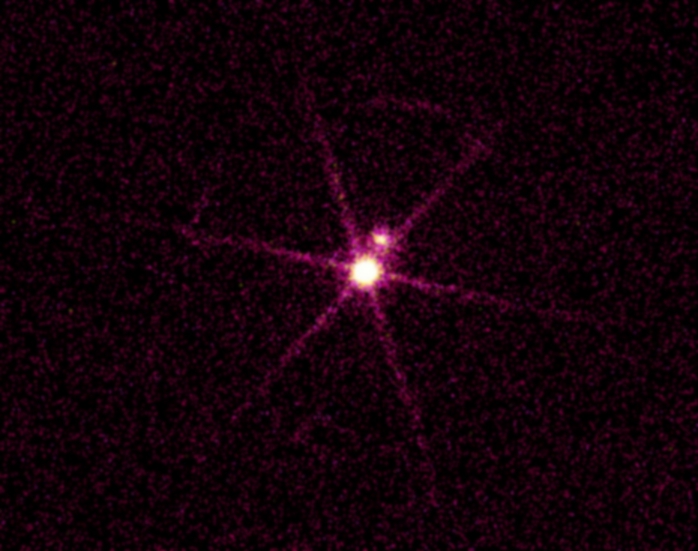
 Credit: NASA/SAO/CXC
Credit: NASA/SAO/CXC
Dwarf outshines star
The star Sirius is the brightest star visible in the northern hemisphere.
As realized in 1862, the star has a companion - a small, faint, hot star
known as a white dwarf. White dwarfs represent the end stages of the
evolution of relatively "low mass" stars (i.e. stars which have a mass near
that of our Sun): they're actually the remains of the evolved star's core.
They pack about 1 solar mass into a volume the size of the earth, which
means that they are extremely dense, and have strong gravitational fields.
When young they are very hot (with temperature of 10 thousand to 100
thousand degrees), hot enough to emit X-rays. The X-ray image above was
taken with the High
Resolution Camera (HRC) on the Chandra (X-ray observatory). In this
X-ray image the white dwarf companion is much brighter than the visual
primary star. The bright "spokes" in the image are produced by X-rays
scattered by the support structure of the Low Energy Transmission Grating
(LETG) which was in the optical path for this observation. This
observation is particularly fitting, since the namesake of the Chandra
Observatory, Subrahmanyan
Chandrasekhar, developed the theoretical understanding of the structure
of white dwarfs.
Last Week *
HEA Dictionary * Archive
* Search HEAPOW
* Education
Each week the HEASARC
brings you new, exciting and beautiful images from X-ray and Gamma ray
astronomy. Check back each week and be sure to check out the HEAPOW archive!
Page Author: Dr. Michael F.
Corcoran
Last modified February 25, 2001


